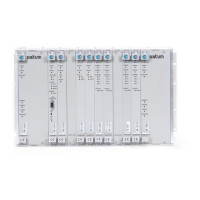Chapter 2 TL1 Reference
System Security
32 SSU-2000 Technical Reference 12713020-003-2 Revision F.01 – January 2007
<cr lf lf>
^^^sid^date^time <cr lf>
alrmcde^atag^REPT^EVT<cr lf>
^^^"aid:condtype,condeff,ocrdat,ocrtm,,,,:condscr"<cr lf>
where:
condeff defines the effect of the event on the system, as follows:
– CL indicates that a standing condition has been cleared
– SC indicates that a standing condition is raised
– TC indicates a transition of a condition.
If any alarm listed in Chapter 6, Alarms and Events, is set to Not Alarmed
(NA), then
condeff is set to SC when the alarm becomes active and CL
when the alarm is cleared.
Other terms are identified in this section
System Security
The operating software of the SSU-2000 includes a subset of GR-815 security
requirements, including user lockout, password aging, and login failure attempts.
New commands allow an Administrator-level user to query the security log, set the
login failed attempts threshold, set user lockout timer, and set the password-aging
timer. New commands also allow you to back up and restore the configuration in the
shelf.
In order to use the security features, the hardware and firmware in the SSU-2000
must be as shown in the following table.
Module
Module Part
Number
Hardware Revision
Required
1
Note:
1
The hardware revision is on a label located on the front panel. You can display the hardware
revision by issuing the TL1 command RTRV-INV, or the ICS command CONFIG.
Firmware Code Part
Number
Communications
module
23413012-00x-0 A.00 or higher 14313012-000-5 Rev. M.00
Clock modules
23413015-00x-0
23413016-000-0
A.00 (JCC: B.00) or higher
A.00 (JCC: A.10)
2
or higher
2
Japan Composite Clock
14313015-000-5 Rev. M.00

